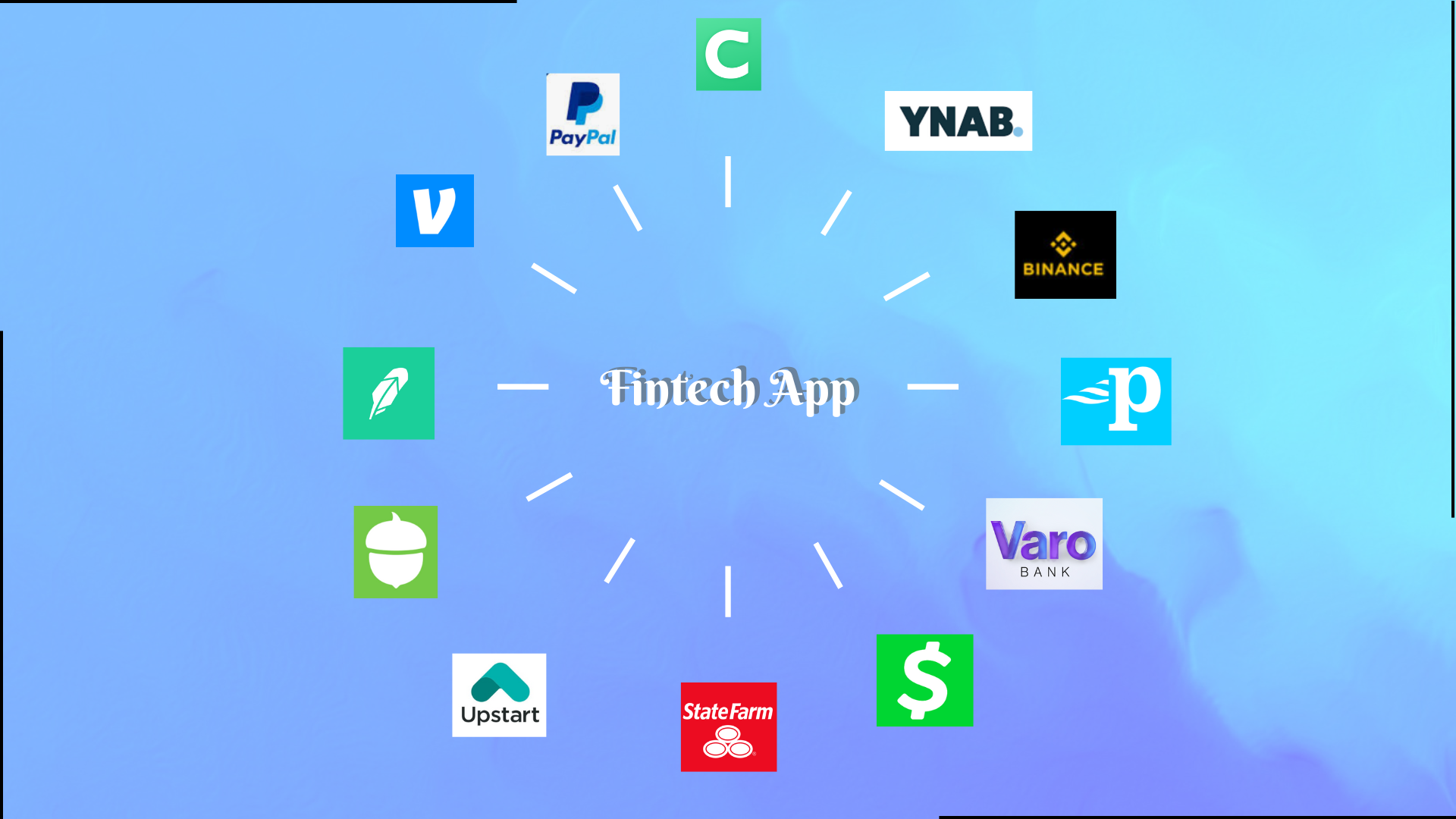Fintech Mobile App Development: Services, Costs, Trends, And New Ideas For 2024
The fintech mobile app development market is experiencing a remarkable surge in growth and potential, as evidenced by several key statistics. The industry’s global market value is on a path to hitting an impressive $324.8 billion by 2026, marking a compound annual growth rate (CAGR) of 24% from 2021. This significant growth is partly attributed to the COVID-19 pandemic, which has rapidly accelerated the adoption of fintech apps. During this period, there was a noticeable increase in digital payments, online banking, and contactless transactions, reflecting a shift towards more digital and secure financial methods.
As the demand for digital financial services continues to rise, 2024 is expected to witness stronger partnerships between banks and fintech companies. These collaborations will empower traditional institutions to adopt digital transformation and stay relevant in the rapidly changing financial sector.
- Why 2024 Is The Best Time To Launch A Fintech App?
- Why is fintech app development important?
- What are the latest trends in fintech mobile app development?
- Top 6 Hottest Fintech Ideas That Will Rock In 2024
- How to develop a fintech app?
- Key Technical Features For Fintech Mobile App Development
- How to Choose a Development Team for a Fintech App?
- BoomDevs: A Powerhouse for Building Your Fintech Dream
- Other Top 5 Fintech Mobile App Development Companies for 2024
- What Affects the Fintech Mobile App Development Cost?
- How much does it cost to build a fintech app?
- Frequently Asked Questions [Fintech Mobile App Development]
- Final Thoughts
Why 2024 Is The Best Time To Launch A Fintech App?
The year 2024 isn’t just any year for fintech mobile app development. It’s a golden age, a fertile ground bursting with potential for innovative apps that will reshape the financial landscape. Why? Let the data do the talking.
Growth In Downloading Fintech Apps
In 2022, fintech apps faced tough times due to issues like the fall of cryptocurrency and stock markets and overall economic troubles. Still, the number of people installing fintech apps worldwide went up by 2%, showing the strength of this sector. Mobile financial services remained popular globally. A report by Adjust in 2023 showed that this positive trend is still going on. In January 2023, there was a 6% increase in fintech app installs compared to the same time last year. Compared to the average in 2022, January 2023 saw a 13% rise in app installs.

Source: Adjust
Explosive Market Growth and User Adoption
Booming market: The global fintech market is projected to surpass $31 trillion by 2028, growing at a staggering CAGR of 24.8%. (Source: Stfalcon.com)
Mobile-first users: Over 65% of global consumers are expected to rely on mobile banking by 2023, highlighting the dominant role of mobile in financial management. (Source: Business of Apps)
Millennial and Gen Z dominance: 78% of US millennials and 72% of millennials and Gen Z globally already leverage fintech platforms, showcasing their preference for digital financial solutions. (Source: Exploding Topics & PwC)
Mobile payment transactions: Projected to grow by 121% by 2022, emphasizing the dominance of mobile in financial activities. (Source: Tipalti)
Digital investment: Remains the largest fintech segment, with a projected transaction value of nearly $112.90 billion in 2023. (Source: Stfalcon.com)
High awareness: 96% of global consumers are aware of at least one fintech service, indicating a vast potential customer base. (Source: Tipalti)
Investing in 2024 Offers Advantages:
Post-correction stability: After facing challenges in 2022, the fintech market is stabilizing, presenting a favorable entry point for new players.
Evolving regulatory landscape: Open banking and other policy changes are creating a more conducive environment for fintech innovation.
Tech advancements: Cloud infrastructure, AI, and blockchain technologies are making fintech mobile app development and deployment more accessible and efficient.
Remember, the success of your fintech app in 2024 hinges on:
- Identifying a genuine need in the market and offering a unique value proposition.
- Providing a seamless and secure user experience.
- Ensuring compliance with relevant regulations.
- Building a strong marketing and customer acquisition strategy.
Why is fintech app development important?
Fintech apps are revolutionizing the way we manage our finances, offering a plethora of benefits for both individuals and businesses. If you’re considering fintech mobile app development, here’s a deep dive into the most convincing reasons why you should embrace the power of a custom-built fintech app:
For Individuals:
1. Convenience and Accessibility:
24/7 Access: Manage your finances anytime, anywhere, from the comfort of your smartphone. No more waiting in bank lines or relying on limited banking hours.
Simplified Transactions: Send and receive money, pay bills, and make purchases instantly and effortlessly. Forget about cash or waiting for checks to clear.
Automated Tasks: Schedule recurring payments, set savings goals, and track your financial activity automatically. Save time and mental energy on tedious financial tasks.
2. Enhanced Financial Management:
Budgeting and Tracking: Monitor your spending, categorize expenses, and create personalized budgets to stay on top of your finances. Gain valuable insights into your financial habits and areas for improvement.
Investment Opportunities: Access investment platforms and tools directly within your app, making investing more accessible and convenient. Start building your wealth with low barrier-to-entry options.
Personalized Financial Advice: Leverage AI-powered tools and insights to receive personalized financial recommendations tailored to your unique needs and goals.
3. Security and Control:
Data Encryption: Fintech apps employ robust security measures to protect your sensitive financial information. Enjoy peace of mind knowing your data is secure.
Fraud Prevention: Advanced fraud detection algorithms in fintech apps can help identify and prevent suspicious activity, safeguarding your finances.
Increased Transparency: Gain better access to your financial data and transactions, empowering you to make informed decisions.
4. Improved Financial Inclusion:
Access to Financial Services: Fintech apps reach populations that may have been traditionally excluded from the financial system, promoting financial inclusion and empowerment.
Microfinance and Alternative Lending: Innovative fintech solutions provide access to microloans and alternative financing options for individuals and small businesses with limited access to traditional banking.
Increased Financial Literacy: Many fintech apps offer educational resources and gamified features to promote financial literacy, helping users make informed financial decisions.
Why do companies or banks need FinTech?
1. Increased Efficiency and Productivity:
Streamlined Operations: Automate routine financial tasks like payroll, invoicing, and expense management, freeing up valuable time and resources for core business activities.
Improved Cash Flow Management: Gain real-time insights into your financial health and make informed decisions about cash flow and budgeting.
Enhanced Customer Service: Offer convenient and secure payment options to your customers, improving customer satisfaction and loyalty.
2. Access to New Markets and Customers:
Mobile Payments: Accept mobile payments conveniently and securely, catering to today’s tech-savvy consumers.
Cross-border Transactions: Expand your reach by simplifying international payments and transactions.
Financial Tools for Small Businesses: Access financing options, business loans, and other financial tools designed specifically for small businesses.
3. Reduced Costs and Improved Profitability:
Lower Transaction Fees: Fintech apps often offer more competitive transaction fees compared to traditional banks, saving businesses money.
Paperless Processes: Reduce printing and postage costs by moving to a paperless financial system.
Data-Driven Decisions: Leverage data and analytics to optimize business operations and make data-driven financial decisions.
What are the latest trends in fintech mobile app development?
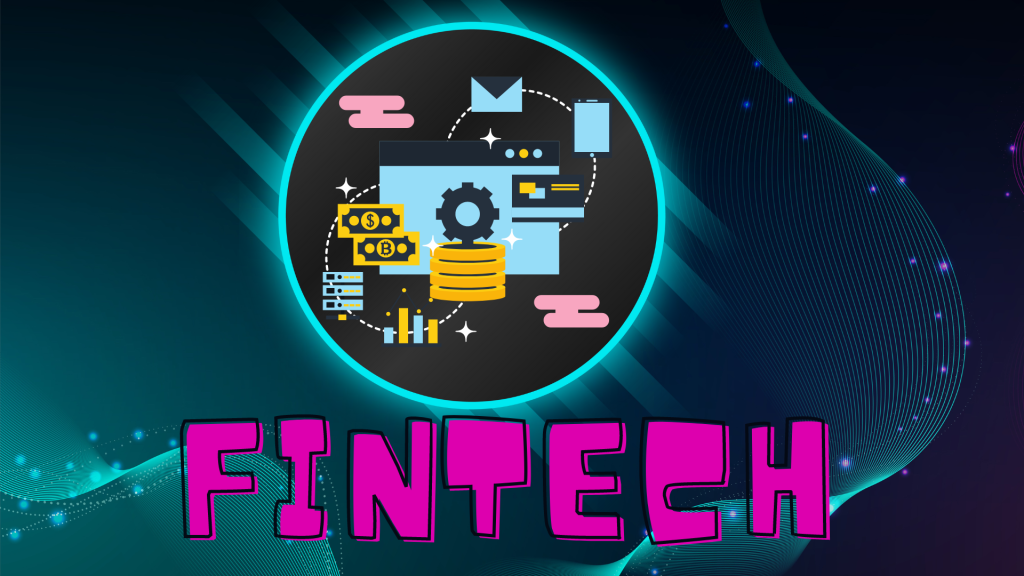
Traditional finance is crumbling under the weight of innovation. Savvy players are leveraging fintech mobile app development to ride the wave. Explore the 12 game-changing trends that are reshaping the financial landscape, from open banking to decentralized finance:
Payment Apps
These apps, like PayPal, Venmo, and Cash App, allow users to send and receive money, make online and in-store payments, and manage finances efficiently. They simplify the process of money transfer and are useful for both personal and business transactions.
Mobile Banking
Mobile banking is transforming the way customers interact with banks. Apps like Chime, Varo, and Revolutexemplars in fintech mobile app development provide traditional banking services such as account opening, deposits, withdrawals, and transfers. They often include features like mobile check deposit and bill payment, offering a convenient alternative to physical banking.
Voice Commands
Voice recognition technology is on the rise, with potential security concerns, but it’s expected to gain popularity for fintech applications in 2024.
Gamification in Fintech Apps
In fintech mobile app development, gamification involves interactive features, personal badges, and incentives like fantasy trading to engage users and simplify financial tasks. Monobank stands out as a prime example, with 1.3 million daily users and offering achievement badges for various tasks, making banking more engaging.
Investment Apps
Robinhood, Acorns, and Stash fall under this category, enabling users to invest in stocks, bonds, ETFs, and other financial products. They cater to both seasoned investors and beginners, making investment more accessible to a wider audience.
Lending Apps
These apps, including Affirm, Upstart, and Earnin, offer access to various types of loans, such as personal, student, and business loans. They aim to streamline the borrowing process with quick approvals and user-friendly interfaces.
Insurance Apps
Lemonade, State Farm, and Geico are examples of apps that allow users to compare and purchase different insurance policies like health, car, and home insurance, simplifying the process of choosing insurance plans.
Financial Management Apps
Mint, Personal Capital, and YNAB help users track their spending, budget their money, and save for financial goals. They offer insights into spending habits and financial planning tools.
Blockchain and Cryptocurrency Apps
Coinbase, Binance, and Gemini are popular in this category, providing platforms for buying, selling, and trading cryptocurrencies like Bitcoin and Ethereum. They cater to the growing interest in digital currencies and blockchain technology.
RegTech Apps
These apps assist financial institutions in complying with regulations and include solutions for Know Your Customer (KYC) and Anti-Money Laundering (AML).
Robotic Process Automation (RPA)
RPA technology is automating processes across industries, including fintech, with the adoption of intelligent bots that make decisions based on triggers.
Chatbots
Chatbots are enhancing customer service in fintech, providing informational, transactional, and advisory assistance via text, voice, or video, increasing trust and efficiency.
Artificial Intelligence and Machine Learning
Many people ask Is AI used in fintech? The answer is Yes! AI and ML algorithms are transforming fintech by making accurate predictions and tailoring products to customer needs. They also aid in risk assessment, credit scoring, fraud detection, and regulatory compliance.
Top 6 Hottest Fintech Ideas That Will Rock In 2024
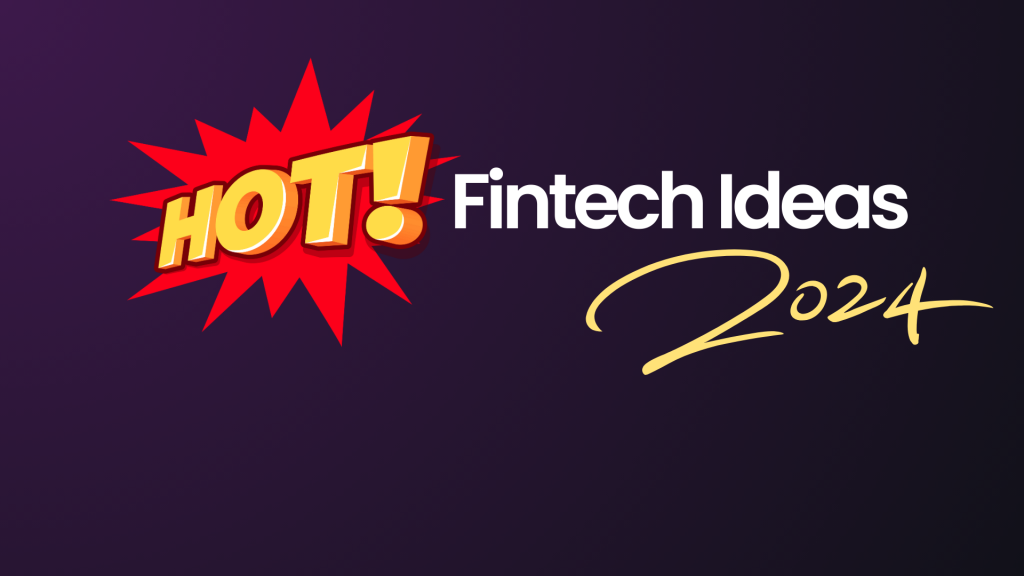
By combining innovative ideas like those mentioned above, alongside data-driven insights and user-centric design, you can embark on fintech mobile app development that thrives in this exciting landscape. 2024 presents a fertile ground for innovative fintech app ideas, fueled by rising user adoption, evolving technologies, and changing financial behaviors. Here are some potential game-changers:
1. Hyper-Personalized Finance Assistant:
- Concept: An AI-powered app that goes beyond simple budgeting. Using machine learning, it analyzes spending habits, income streams, and financial goals to provide personalized recommendations for investments, debt management, and saving strategies.
- Twist: Integrate gamified elements and challenges to encourage healthy financial habits, like earning badges for reaching savings goals or unlocking rewards for responsible spending.
2. Decentralized Finance (DeFi) Onboarding Platform:
- Concept: Simplify access to DeFi protocols and blockchain-based financial instruments for mainstream users. Offer clear explanations, risk assessments, and automated asset management tools within a user-friendly interface.
- Twist: Partner with educational platforms and influencers to demystify DeFi concepts and build trust within the community, fostering responsible crypto adoption.
3. Mental Health-Focused Financial Wellness App:
- Concept: Address the emotional side of money management by combining financial tools with mindfulness exercises and stress management techniques. Offer personalized support for financial anxiety, budgeting tips for mental health conditions, and gratitude-based goal setting.
- Twist: Integrate wearable technologies to track stress levels and recommend financial activities based on real-time emotional state, promoting mindful spending and informed financial decisions.
4. Location-Based Micro-Investment Platform:
- Concept: Enable micro-investments based on real-world experiences. Users invest in local businesses, projects, or events nearby, receiving rewards or returns based on their success.
- Twist: Integrate augmented reality experiences to showcase investment opportunities, allowing users to virtually explore ventures before investing, adding a fun and interactive element.
5. Sustainable Finance Marketplace:
- Concept: Connect investors with environmentally and socially responsible projects and businesses. Offer curated portfolios, impact tracking tools, and carbon footprint calculators to promote sustainable investing.
- Twist: Partner with NGOs and green initiatives to offer unique investment opportunities in renewable energy, ethical fashion, and community development projects, fostering positive social impact.
6. Time Banking Platform:
- Concept: Exchange skills and services within a trusted community, earning “time credits” that can be used to access other services or receive professional help. Democratize access to expertise and promote mutual support.
- Twist: Integrate blockchain technology to ensure secure transactions and build trust within the community, encouraging broader adoption and creating a vibrant ecosystem of shared skills and time-based values.
How to develop a fintech app?
Creating a FinTech app is a multifaceted process that demands careful planning and execution. Here’s a step-by-step guide on how to build a successful FinTech app:
1. Idea Generation: Start by generating a unique app idea that addresses a specific financial need or problem. Consider what sets your app apart from existing solutions and how it can provide value to users.
2. Market Analysis: Conduct thorough market research to understand the financial landscape, identify your target audience, and analyze competitors. Gain insights into market trends, user preferences, and pain points.
3. Monetization Strategy: Decide on a monetization model for your app. Options include subscription fees, transaction fees, in-app ads, or a combination of these. Choose the model that aligns with your app’s features and user base.
4. Design and User Experience: Design an intuitive user interface (UI) and prioritize the user experience (UX). Create wireframes to plan the app’s layout and flow. Ensure simplicity, transparency, and a visually appealing design.
5. Development Team: Assemble a skilled development team comprising back-end and front-end developers, business analysts, project managers, designers, product managers, and quality assurance specialists. Consider outsourcing to save time and resources.
6. Minimum Viable Product (MVP): Develop an MVP that includes essential features to solve users’ problems. An MVP allows you to test your app on the market, gather user feedback, and make improvements based on real-world usage.
7. Compliance and Security: Ensure compliance with financial regulations and implement security measures like Know Your Customer (KYC) and Anti-Money Laundering (AML) protocols. Adhere to privacy laws such as GDPR and CCPA.
8. Testing: Thoroughly test the app for functionality, compatibility across different devices and resolutions, and security. Fix any bugs or issues to ensure a smooth user experience.
9. Launch and Feedback: Release the app on app stores like the App Store and Google Play. Encourage user feedback and reviews to understand their needs and concerns. Use this feedback to enhance the app and release updates.
10. Continuous Improvement: Maintain the app by regularly updating and adding new features. Stay responsive to user needs and market trends to keep your FinTech app competitive and relevant.
Key Technical Features For Fintech Mobile App Development
When delving into the technical aspects of fintech mobile app development, several key features must be incorporated to ensure functionality, security, and user satisfaction:
Advanced Security Protocols
Security is the linchpin of fintech applications. Implementing multi-layered authentication processes, including one-time passwords and biometric verification, ensures robust protection of user data. Consistent security assessments and timely updates are imperative to mitigate risks and safeguard financial information.
Efficient API Integration
Integrating smoothly with a range of financial services via APIs is crucial for a FinTech app’s functionality. Such integration enhances the app’s offerings, facilitating connections to external payment systems, for instance. It’s essential to partner with services that adhere to the highest security standards, maintaining the integrity and trustworthiness of the app.
User-Centric Design
Simplifying the complexity of financial operations into a user-friendly experience is key. The app should boast an intuitive interface and provide effortless navigation, making financial management accessible and engaging for all users, regardless of their financial expertise.
Accessible Customer Support
Providing immediate, reliable customer support is fundamental. An effective support system should include AI-driven assistance for basic queries and a proficient customer support team for handling intricate issues, ensuring a seamless and supportive user journey.
Regulatory Compliance
Compliance with legal and regulatory standards is non-negotiable. Fintech apps must align with financial regulations, such as PCI-DSS for transaction security and GDPR for data protection, to ensure lawful operation and to maintain user confidence.
How to Choose a Development Team for a Fintech App?
With the right partner in hand, you can create a revolutionary fintech app that empowers users and disrupts the traditional financial landscape. Take the first step towards your fintech success and embark on a journey of financial innovation! Remember, choosing the best fintech mobile app development company is an investment in your success. By conducting thorough research, following these recommendations, and prioritizing a partner that aligns with your vision, you can embark on a rewarding journey toward launching a groundbreaking fintech app. To ensure the best fintech app development services follow these steps:
1. Define Your Needs & Goals:
- Identify your target audience and their specific needs.
- Outline the functionalities and features of your desired app.
- Set a realistic budget and timeline for development.
- Determine the technology stack required for your app’s functionalities.
2. Research Potential Partners:
- Browse online directories and industry websites dedicated to fintech app development companies.
- Utilize tools like Clutch, GoodFirms, and Upwork to compare and review companies.
- Read company websites, case studies, and client testimonials to understand their expertise and experience.
- Follow social media pages and blogs for insights into their work and values.
3. Evaluate Their Capabilities:
- Look for companies with proven experience in fintech app development.
- Assess their expertise in specific technologies relevant to your app (e.g., blockchain, AI).
- Consider their development methodology and project management approach.
- Evaluate their communication and collaboration practices.
- Prioritize companies with a user-centric design philosophy.
4. Compare Quotes and Services:
- Request proposals from shortlisted companies based on your detailed project requirements.
- Compare their quotes comprehensively, considering not just cost but also value offered.
- Evaluate the scope of services included in each proposal.
- Pay attention to hidden fees or additional charges.
5. Schedule Consultations and Interviews:
- Hold in-depth discussions with potential partners to assess their understanding of your vision.
- Ask specific questions about their approach to your project and potential challenges.
- Gauge their team’s communication skills and collaboration style.
- Request references from past clients and follow up with them for additional insights.
6. Make an Informed Decision:
- Choose a company that aligns with your needs, budget, and priorities.
- Prioritize trust and build rapport with your chosen partner.
- Negotiate a clear contract outlining deliverables, timelines, and communication protocol.
Beyond these crucial points, here are some additional tips for a successful search:
- Attend industry events and conferences to network with potential partners.
- Seek recommendations from trusted colleagues or advisors within the fintech space.
- Don’t be afraid to negotiate to secure the best deal for your project.
- Maintain open communication and transparency throughout the development process.
BoomDevs: A Powerhouse for Building Your Fintech Dream
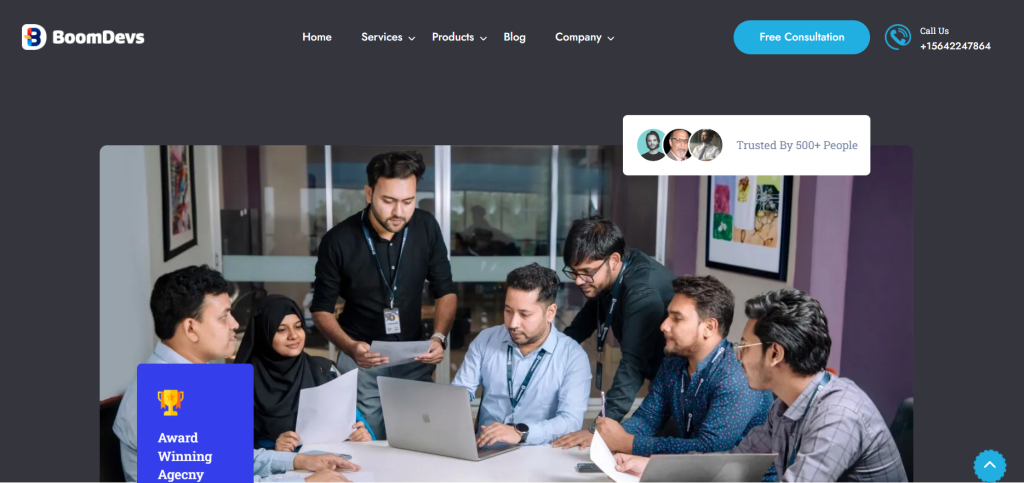
BoomDevs presents itself as a strong contender in the fintech mobile app development space, demonstrating a clear focus, user-centric approach, and diverse portfolio. However, exploring their technology expertise, showcasing global reach, and providing detailed case studies could further strengthen their position as a top choice for fintech app development projects.
Proven Fintech Expertise:
- Their key projects like “SNAP! SPEND” and “Flash Trade” showcase their ability to handle complex financial functionalities like payment systems and crypto trading platforms. This demonstrates a deep understanding of the fintech landscape and its specific challenges.
Diverse Capabilities:
- Their expertise extends beyond development, encompassing UI/UX design, web development, and technology integration. This comprehensive skillset ensures every aspect of your app, from user experience to technical execution, is addressed with finesse.
User-Centric Focus:
- Their emphasis on UI/UX design suggests a commitment to building app interfaces that are intuitive, engaging, and build trust with users, a crucial factor in the sensitive world of finance.
Strong Portfolio:
- Their website showcasing various projects allows you to gain a comprehensive understanding of their range and depth of experience. This can help you determine if their work aligns with your specific vision.
Additional Advantage:
- Their mention of being a suitable choice for “mobile app development” specifically caters to your interest in a mobile fintech app.
Here are some additional resources to help you make your decision:
- BoomDevs Website: https://boomdevs.com/
- Their Portfolio: https://boomdevs.com/project-page/
- Client testimonials: https://boomdevs.com/
Remember:
- While these points highlight BoomDevs’ strengths, a well-informed decision requires further research. Compare their offerings with other potential partners, considering your specific needs, budget, and target audience.
- Explore their website in detail, review client testimonials, and consider contacting them directly for a consultation to gain a deeper understanding of their capabilities discuss your project in detail, and see if they are the right fit for you.
Other Top 5 Fintech Mobile App Development Companies for 2024
The fintech app landscape is booming, and with the right partner, you can launch a game-changing app that transforms the financial experience. Here are 5 of the best fintech app development companies for 2024, chosen based on their expertise, experience, and innovative solutions:
1. Algar Tech

- Data: Founded in 1972, with extensive experience in financial software development.
- Strengths: A global leader in digital transformation, renowned for their secure and scalable fintech solutions. They specialize in building payment processing apps, lending platforms, and wealth management tools.
- Unique offering: Algar’s “Omni. Connect” platform integrates various financial services and institutions, streamlining data management and enabling seamless customer experiences.
2. Cognizant
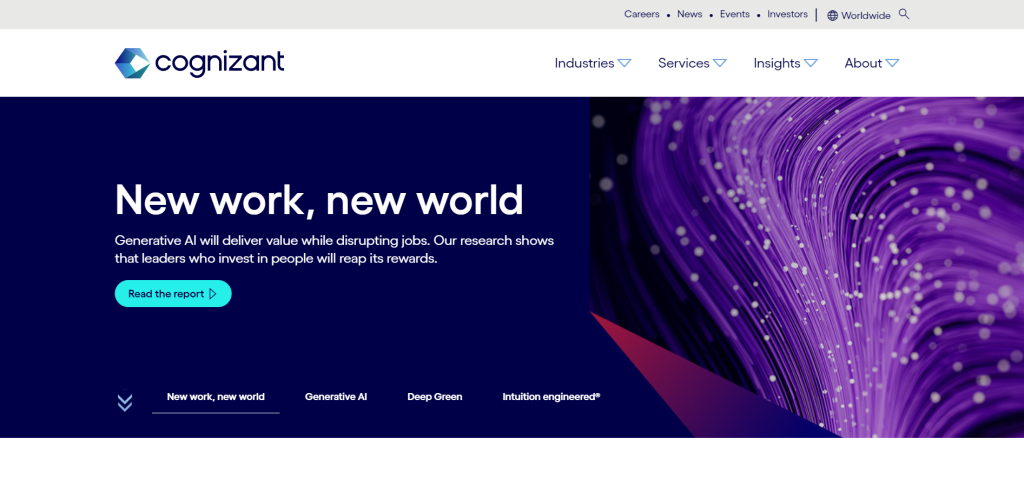
- Data: A Fortune 500 company with over 350,000 employees globally.
- Strengths: Extensive experience in mobile app development and cloud-based solutions. Their expertise lies in building secure and scalable fintech apps for various sectors, including banking, insurance, and investment platforms.
- Unique offering: Cognizant’s “FinTech Accelerator” program helps startups and established players quickly launch innovative fintech solutions using pre-built components and industry best practices.
3. Hedgehog Lab

- Data: Founded in 2016, with a strong focus on blockchain and cryptocurrency solutions.
- Strengths: Pioneering blockchain-based fintech app development, building secure and transparent financial platforms for DeFi, crypto wallets, and digital asset exchanges.
- Unique offering: Hedgehog Lab’s “DeFi Launchpad” helps businesses develop and launch decentralized finance apps efficiently, providing support for smart contract development, tokenomics design, and security audits.
4. Netguru
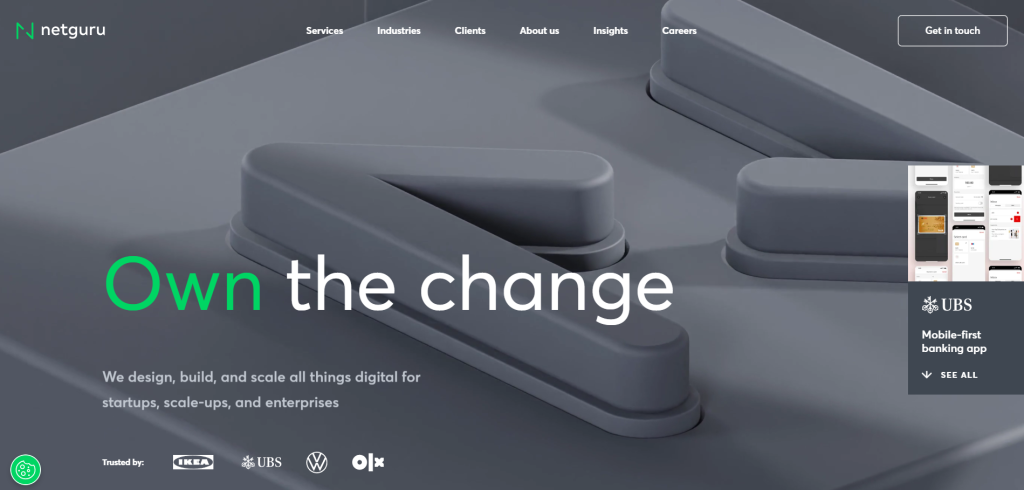
- Data: A multinational company with over 700 employees, specializing in custom software development.
- Strengths: Strong expertise in user-centered design and building personalized financial solutions. They excel in developing mobile apps for investment platforms, digital banking tools, and wealth management solutions.
- Unique offering: Netguru’s “Fintech Design Thinking Workshop” helps clients develop innovative app concepts through user research, rapid prototyping, and iterative testing, ensuring a user-centric approach.
5. UpLabs
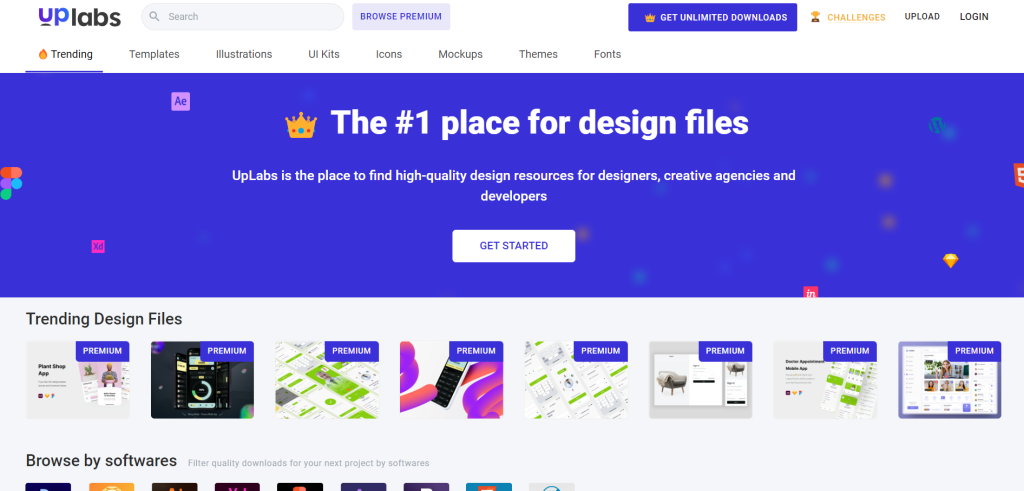
- Data: Founded in 2014, with a focus on building high-performance mobile apps for startups and established businesses.
- Strengths: A proven track record in delivering high-quality and engaging fintech apps. Their expertise lies in building mobile wallets, payment solutions, and personal finance management tools.
- Unique offering: UpLabs’ “Agile Development Approach” ensures rapid iteration and continuous improvement, allowing clients to quickly adapt their apps to changing market conditions and user feedback.
What Affects the Fintech Mobile App Development Cost?
The fintech mobile app development cost is influenced by factors such as the complexity of the app’s features, the technology stack used, and the expertise level of the development team. The integration of advanced security measures and compliance with financial regulations can significantly impact the overall cost. Some key aspects are:
Product Requirements
This step involves defining the features and functionality of the app. This includes things like what type of app it is (e.g., a banking app, a trading app, etc.), what features it will have (e.g., the ability to transfer money, track investments, etc.), and who the target audience is.
Interactive UI/UX
This step involves designing the user interface and user experience of the app. This includes things like the layout of the app, the color scheme, the typography, and the way that users interact with the app.
Location of the Development Partner
This step involves deciding where to develop the app. This could be done in-house, or it could be outsourced to a development company.
Time Required for Development
This step involves estimating how long it will take to develop the app. This will depend on the complexity of the app and the resources available.
App Maintenance
This step involves maintaining the app after it has been launched. This includes fixing bugs, adding new features, and updating the app for new devices and operating systems.
Advanced Technologies and Tools Used
This step involves selecting the technologies and tools that will be used to develop the app. This could include things like programming languages, frameworks, and development tools.
Languages Used
This step involves selecting the languages that the app will support. This will depend on the target audience of the app.
Features Integrated
This step involves selecting the features that will be integrated into the app. This could include things like third-party APIs, payment gateways, and security features.
How much does it cost to build a fintech app?
Now, considering these factors, if you plan to develop a FinTech app with basic features (MVP), the development cost can vary. This table summarizes the development cost ranges and hourly rates for each region when creating a FinTech app with basic features (MVP).
| Region | Cost Range | Hourly Rate |
| Central and Eastern Europe | $35,000 – $75,000 | $50/h |
| Western Europe | $75,000 – $150,000 | $100/h |
| North America | $110,000 – $225,000 | $150/h |
| South America | $45,000 – $90,000 | $60/h |
| South Asia | $30,000 – $60,000 | $40/h |
| Africa | $30,000 – $60,000 | $40/h |
| Australia | $75,000 – $150,000 | $100/h |
Related Articles:
- How Valuable Is Fintech Innovation?
- Fintech Interview Questions And Answers
- How Fintech Companies Work?
Frequently Asked Questions [Fintech Mobile App Development]
Q1: What is fintech mobile app?
A1: Fintech, short for financial technology, refers to the integration of technology into financial services, aiming to improve and automate the delivery and use of financial services to consumers and businesses.
Fintech apps allow you to manage various financial activities easily. You can perform online banking, make digital payments, invest in different assets, apply for loans, buy insurance, and manage personal finances. They also enable peer-to-peer money transfers and offer financial advice, all accessible through your smartphone or computer.
Q2: What is an example of FinTech?
A2: An example of FinTech (Financial Technology) is a mobile payment platform like Apple Pay or Google Pay. These platforms allow users to make payments using their smartphones, often through contactless technology, and are a clear demonstration of how technology is used to enhance and simplify financial transactions in the modern world. Popular fintech apps include PayPal, Venmo, Robinhood, Mint, Square, Stripe, Chime, and Revolut.
Q3: What Technologies are Used in Fintech Mobile App Development?
A3:
- Native Apps: For Android, Kotlin and Java are used with databases like MySQL, SQLite, MongoDB, PostgreSQL. For iOS, Swift is the primary language.
- Cross-platform Apps: Technologies like Flutter, Ionic, Xamarin, React Native, and Appcelerator Titanium are popular.
- Hybrid Mobile Apps: These use HTML and JavaScript.
Q4: How Long Does It Take to Develop a Fintech App?
A4: The development time depends on the app’s complexity and specific requirements. It’s best to consult with a development team for an accurate timeframe
Q5: How can I measure the success of my fintech mobile app?
A5:Track key metrics like user engagement, app downloads, active users, and transaction volume to gauge the success of your app. Regularly analyze these metrics and make adjustments based on the data to optimize your app and drive user growth.
Q6: Should I build my own development team or hire a fintech app development company?
A6: Building your own team requires significant resources and expertise. Hiring a qualified fintech app development company can save time and money and ensure expertise in building secure and compliant apps.
Q7: What are the essential features for a fintech mobile app?
A7: Common features to consider include secure login (fingerprint, facial, or voice recognition), push notifications, budget tracking, financial operations (transfers, digital payments, balance checks), card and QR code scanning, AI-powered chatbots, and features like cashback offers.
Q8: What are Some Challenges in Fintech App Development?
A8: Key challenges include ensuring high-level security and compliance with financial regulations, integrating with existing financial systems, creating a user-friendly interface, and ensuring scalability and performance.
Final Thoughts
Before Jumping into fintech mobile app development, focus on understanding your market and ensuring compliance with financial regulations. Prioritize strong security, user-friendly design, and a clear set of essential features. Plan your budget, choose the right technology, and prepare for future growth. Assemble a skilled team, test thoroughly, and have a strategy for marketing, customer support, and ongoing improvements.



